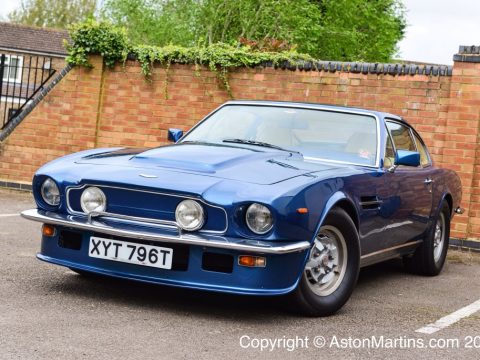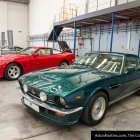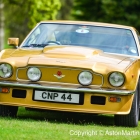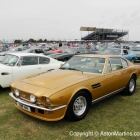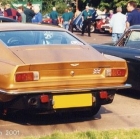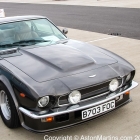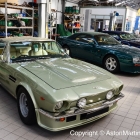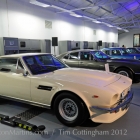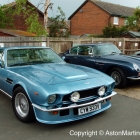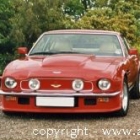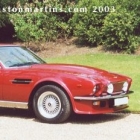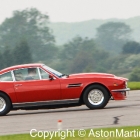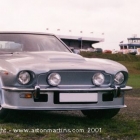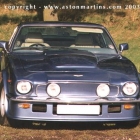Mechanically the ‘Oscar India’ V8 Vantage (V540 OI) remained the same as the earlier series 1 (V540) cars although the interior was more luxurious with leather replacing the vinyl on the dash. Wood veneers for the dash and door capping, standard on the V8 saloon, became an option on the Vantage although it was thought at the time that the shiny surface would distract the serious driver. Forty four examples of the V540 OI cars were built between October 1978 and March 1980.
When Motor Magazine tested the V8 Vantage (a V580 model) an incredible 0 to 60mph time of 5.2 seconds was recorded, slightly faster than the same magazine achieved for the original cars.
Further revisions were made to the V8 Vantage in 1980 although these were purely mechanical and the from the exterior, the car remained unchanged. The V580 cars, as they are known at the factory, were the result of a process of standardising engine parts across the AM V8 range. Changes mainly to the head and valves plus a standard piston for all models resulted in a quieter and smoother engine with both better economy and improved mid-range torque.
From 1983, the 7 inch wide GKN wheels on the Vantage were replaced by the 8 inch cross spoke BBS. These were needed to carry the massively wide 275 section Pirelli P7 tyres and the V580BBS cars are easily identified by wider wheel arches, increasing the overall width from 183 cm to 189 cm.
In the gallery below are examples of the 94 V580BBS cars, although these cars have the Ronal cross spoked more usually associated with the later examples of the Vantage (V580X). How can we tell they are pre X-pack 2 cars? The indicator repeater is on the front of the wing, just behind the headlight; in most cases, the X-pack cars have a square repeater behind the front wheel.
The V8 Vantage pages have been written with the kind assistance of Kean Rogers of the Kangaroo Stable. For more detained information, please visit www.v8vantage.com



